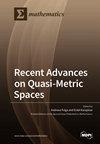两个冲突社会群体的新型布里渊和朗格文函数动态模型:研发过程研究
IF 2.2
3区 数学
Q1 MATHEMATICS
引用次数: 0
摘要
我们考虑了企业研发(R&D)业务流程下的两组社会冲突。冲突参与者根据其对新想法、新技术的态度以及对研发创造性问题的行为方式被分为两组--创新者和适应者。我们揭示了将这两类员工纳入一个项目团队的必要性与他们在研发流程的方法和途径方面的客观对立立场之间的矛盾。我们提出的研究方法是基于一种现代的后非经典范式,这种范式是在一致性、跨学科性、开放性和非线性原则以及社会冲突建模的社会物理学方法的基础上形成的。我们使用 P. 朗热文和 L. 布里卢安的磁学、准磁学和函数的一般理论来描述群体参与者对冲突行为方式的偏好动态。准磁学的类比,包括磁场的定向效应,被用来描述社会群体的互动,这些群体不仅有自己的利益,而且还受到相反社会群体意见的影响。一个二维四参数图代表了群体冲突的动态。建模结果表明,无论初始状态如何,只要有一定的群体内和群体间互动参数,轨迹最终都会收敛到二维空间中的吸引子(极限循环)。在两组冲突中没有发现非周期性或混乱模式,这就决定了所述冲突的可控性。模拟实验的结果被用作决策支持和矛盾解决,旨在形成企业研发业务流程所需的模式,确保群体参与者的凝聚力和去极化。本文介绍了该模型在一家工业企业的测试结果。本文章由计算机程序翻译,如有差异,请以英文原文为准。
A Novel Brillouin and Langevin Functions Dynamic Model for Two Conflicting Social Groups: Study of R&D Processes
We consider a two-group social conflict under the corporates’ research and development (R&D) business processes. Conflict participants are divided into two groups depending on their attitude to new ideas, technologies, and behavioral style for R&D creative problems—innovators and adapters. We reveal the contradiction that arises between the need to include both types of employees in one project team and their objectively antagonistic positions regarding the methods and approaches to R&D processes. The proposed research methodology is based on a modern post-non-classical paradigm formed on the principles of coherence, interdisciplinarity, openness, and nonlinearity, as well as a sociophysical approach to the social conflicts modeling. We use the general theories of magnetism, paramagnetism, and functions of P. Langevin and L. Brillouin to describe the dynamics of group participants’ preferences regarding the style of conflict behavior. The analogy of paramagnetism, consisting in the orienting effect of the magnetic field, is used to describe social groups interactions that have not only their own interests, but are also influenced by the opinions of opposite social groups. A two-dimensional, four-parameter map represents the dynamics of group conflict. Modeling results show that regardless of the initial states and with certain parameters of intra-group and intergroup interactions, the trajectories eventually converge to an attractor (limit cycle) in a two-dimensional space. No non-periodic or chaotic modes are identified in the two-group conflict, which determines the controllability of the described conflict. The results of the simulation experiments are used as decision support and contradictions resolution aimed at forming the required modes of the corporates’ research and development business processes and ensuring the group participants’ cohesion and depolarization. The results of testing the model at an industrial enterprise are presented.
求助全文
通过发布文献求助,成功后即可免费获取论文全文。
去求助
来源期刊

Mathematics
Mathematics-General Mathematics
CiteScore
4.00
自引率
16.70%
发文量
4032
审稿时长
21.9 days
期刊介绍:
Mathematics (ISSN 2227-7390) is an international, open access journal which provides an advanced forum for studies related to mathematical sciences. It devotes exclusively to the publication of high-quality reviews, regular research papers and short communications in all areas of pure and applied mathematics. Mathematics also publishes timely and thorough survey articles on current trends, new theoretical techniques, novel ideas and new mathematical tools in different branches of mathematics.
 求助内容:
求助内容: 应助结果提醒方式:
应助结果提醒方式:


